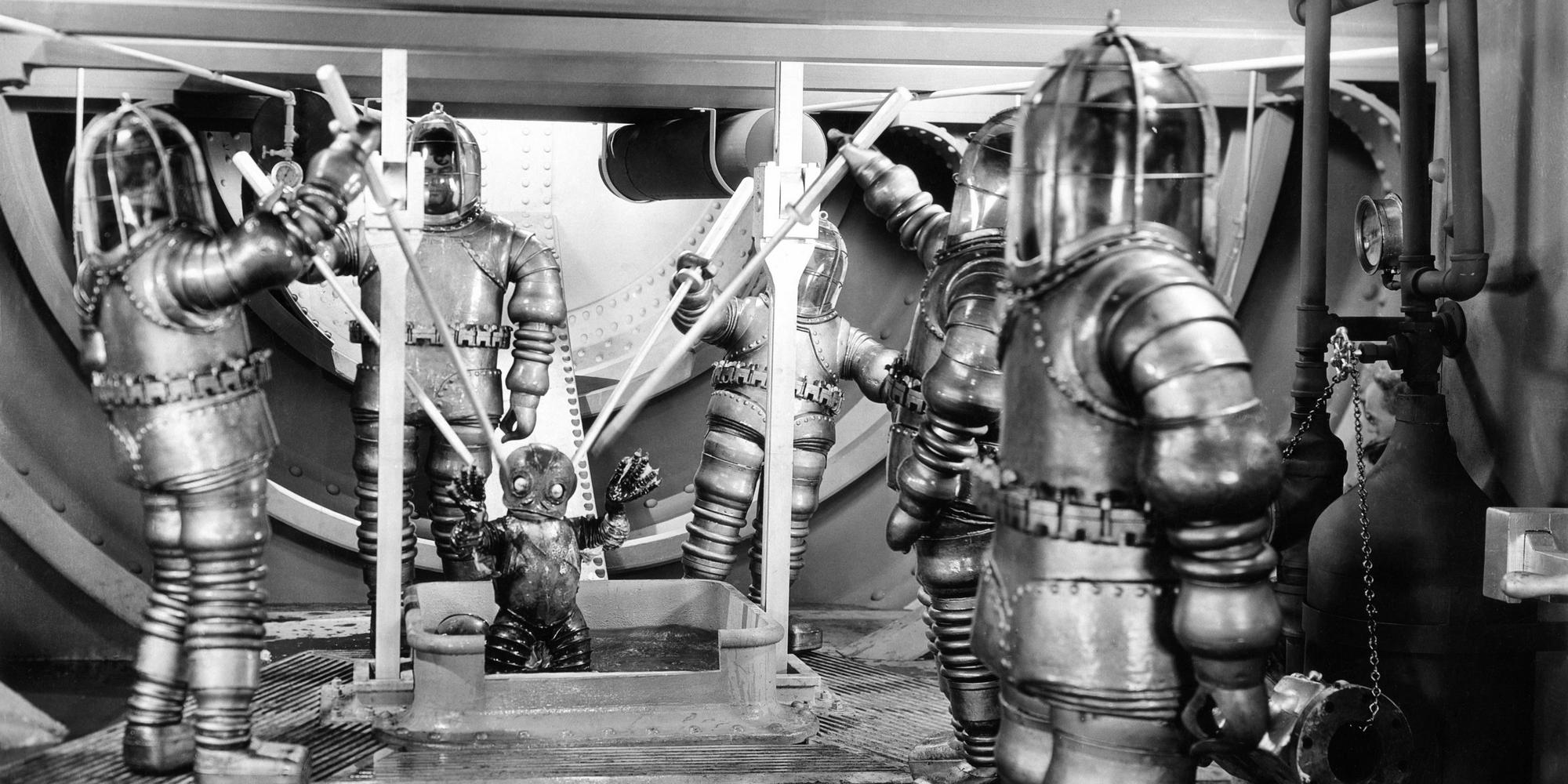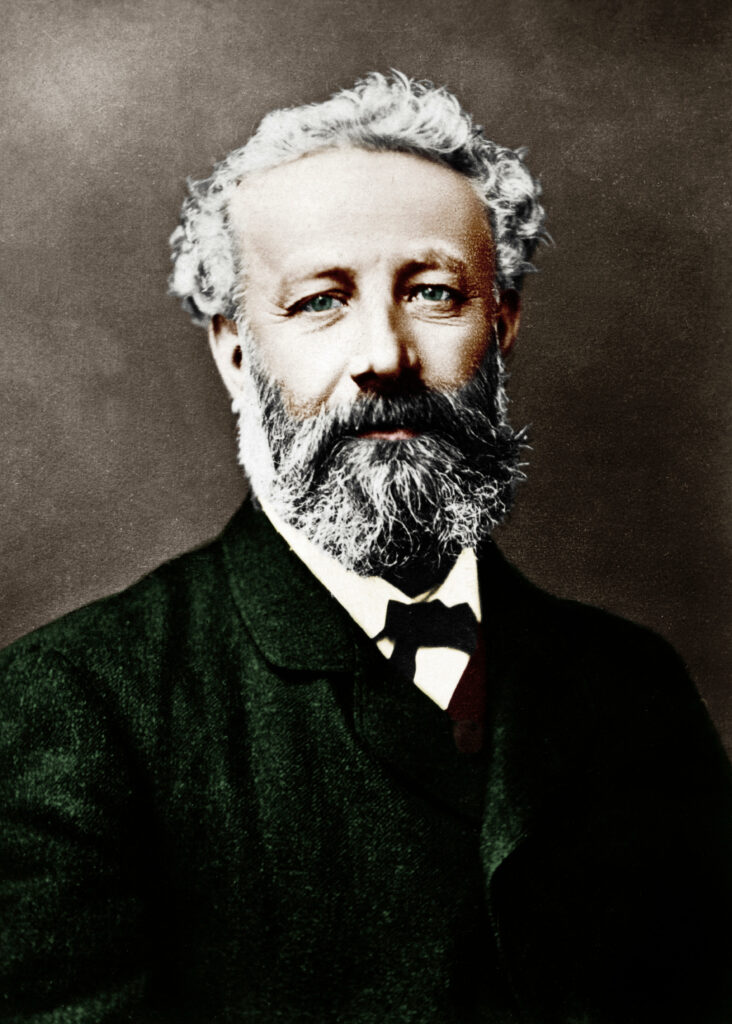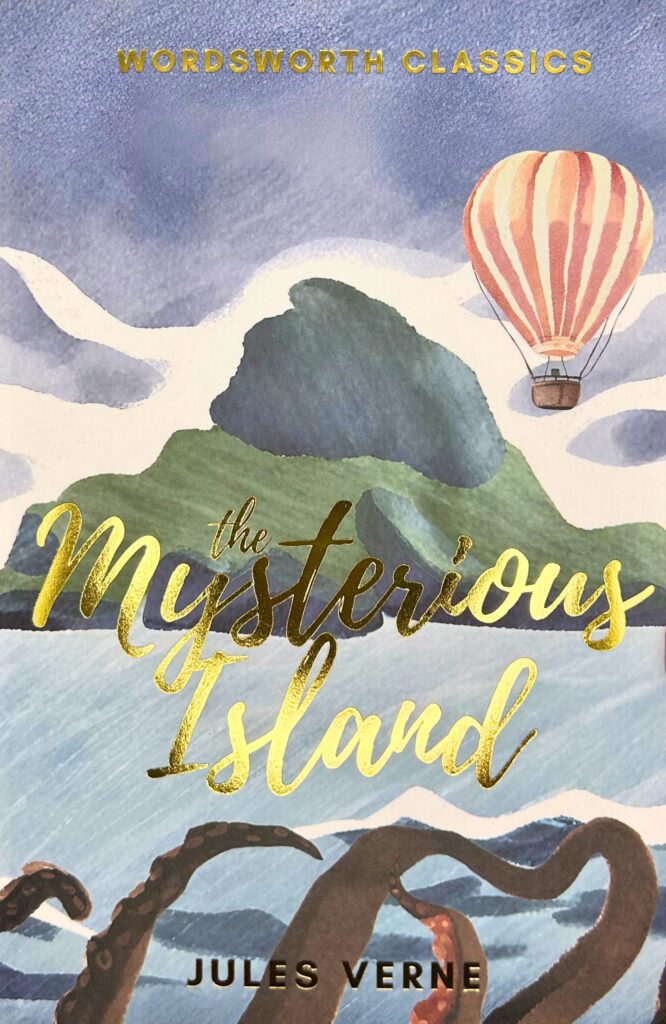
David Stuart Davies looks at The Mysterious Island
Five prisoners of war from the American Civil War escape in an observation balloon and crash-land on an unknown volcanic island. David Stuart Davies takes up the story of The Mysterious Island.
The greatest of all science fiction writers in the nineteenth century was Jules Verne (1828 – 1905).
In fact, he was regarded as the ‘Father of Science Fiction’, although the actual phrase was not coined until the early twentieth century following his death. Verne referred to his works as ‘scientific romances’ and this is an excellent definition of his tales, which involved fantastic scientific inventions and developments along with large helpings of adventure and melodrama. He wrote about space, air and underwater travel before navigable aircraft and practical submarines were invented and before any means of space travel had been devised. In this sense he was not only a fascinating writer but also a visionary.
The Mysterious Island (1874) is perhaps one of Verne’s most experimental works, blending elements from his previous novels. In essence it is a kind of sequel to Twenty Thousand Leagues Under the Sea (1869-70), as well as including a character, Tom Ayrton, from another of Verne’s novels, In Search of the Castaways (1867-68). The plot also suggests influences from two other books featuring desert islands and castaways: Robinson Crusoe and The Swiss Family Robinson.
The story begins during the American Civil War when five prisoners of war escape by stealing an observation balloon and, rather like Phileas Fogg in Verne’s Around the World in 80 Days, fly away. After enduring a terrible storm for several days, the group crash-land on an unknown volcanic island.
Among this eclectic group there is an engineer, an ex-slave, a sailor and his son and a journalist. The company is completed, as you might expect, with a pet dog. (Later, an orangutan becomes part of the group). Combining their various skills, the men are able to sustain themselves on the island, which they name ‘Lincoln Island’ in honour of Abraham Lincoln. Before long they can produce fire, pottery, bricks, a simple electric telegraph and cosy living quarters inside a cave, which they name ‘Granite House.’ They are even able to build a seaworthy vessel.
However, as the title of the novel suggests, there is something mysterious about this island. There are strange unexplainable occurrences suggesting that the men are not alone on the island. These incidents include the mysterious rescue of the dog from an attack by a dangerous sea mammal, the discovery of a lead bullet in the body of a young pig and the presence of a box full of equipment including guns, ammunition, and tools.
They also find a message in a bottle directing them to rescue a castaway from a nearby island. They discover that this individual is none other than Ayrton, the reformed pirate from In Search of the Castaways who is living like a savage. They determine to take him back to Lincoln Island and attempt to civilize him. On setting sail to return they lose their way in a tempest but are guided back to safety by a mysterious fire beacon.
Eventually the secret of the island is revealed. To say much more would spoil the surprises and enjoyment in store for new readers of this rollicking tale; but let me at least reveal that one of the surprises involves Captain Nemo and the submarine Nautilus from Twenty Thousand Leagues Under the Sea.
 Verne did not write character driven narratives. Each of the individuals who land on the island are marked out by their knowledge and talents rather than any individual characteristics they may have. The author’s main purpose in his novels is to create fantastic and exciting episodes to excite the reader and create scenarios that they would not find in other works of fiction. His intention was to fire the imagination – a task he achieved with aplomb.
Verne did not write character driven narratives. Each of the individuals who land on the island are marked out by their knowledge and talents rather than any individual characteristics they may have. The author’s main purpose in his novels is to create fantastic and exciting episodes to excite the reader and create scenarios that they would not find in other works of fiction. His intention was to fire the imagination – a task he achieved with aplomb.
The Wordsworth edition uses the W. H. G. Kingston translation of Verne’s original French manuscript. Kingston was a famous author of boys’ adventure and sea-faring tales. Although his name still appears on the text it has been discovered that in fact the translation was carried out by his wife, Agnes Kinloch Kingston. She streamlined the narrative by abridging or omitting many dry extended technical passages which helped the flow of the story tremendously. Her work (still credited to her husband) has become the standard translation.
It is ironic that the English version was the work of a woman
and yet in The Mysterious Island no women feature in the novel and gender issues never appear, which suggests that Verne’s target audience was boys and young men. This became a problem when the book was taken up by movie makers. A male only movie has a limited appeal and therefore you will find all the screen adaptations of this novel have women shoehorned into the plot. And indeed, there have been quite a few movies based on Verne’s novel, or perhaps more accurately Verne’s title, for none of the cinematic outings have been very true to the original story.
The 1929 movie, which has hardly any of the plot elements of the novel, is, however, very interesting because for such an early film it has a musical score and had some scenes with spoken dialogue. The underwater sequences are fascinating – these feature a submarine, which is obviously the Nautilus but is not referred to by name. We also see a race of very strange small humanoid sea creatures who attempt to capture the underwater vessel. The film starred Lionel Barrymore as a Nemo-like figure.
Another interesting take on the tale was the 1961 movie, which included some very interesting additions. Not only were there two shipwrecked ladies discovered on the island, but the castaways had to contend with giant bees, a monster crab and a huge flightless bird from the prehistoric era, courtesy of Ray Harryhausen’s stop motion special effects. Herbert Lom appeared as white-haired Captain Nemo. Despite this very strange mash-up the film was generally well received and if taken in the right spirit it still is fun to watch. Female castaways and mutant creatures also make an appearance in the 2010 film with Patrick Stewart as Nemo.
The latest film claiming to be ‘Jules Verne’s The Mysterious Island’ appeared in 2020. In this muddled extravaganza, strange flesh-eating creatures and a monster octopus are loose on the island, which is somehow caught in a time loop with elements of the future and the past to challenge the castaways.
While the novel has provided inspiration for various filmed versions, the structure of Verne’s narrative has been ignored in the main. For the thrill of a genuine Victorian adventurous mystery, without monsters, it would be wise to read the book.
Main Image: Lionel Barrymore, Lloyd Hughes and Jane Daly (aka Jacqueline Gadsdon ) in the 1929 MGM film directed by Lucien Hubbard.
Credit: Masheter Movie Archive / Alamy Stock Photo
Image in text: Jules Verne. Credit: Lebrecht Music & Arts / Alamy Stock Photo
Books associated with this article
